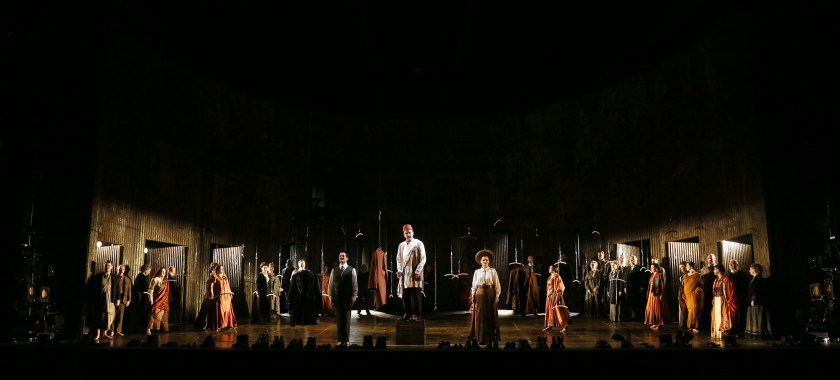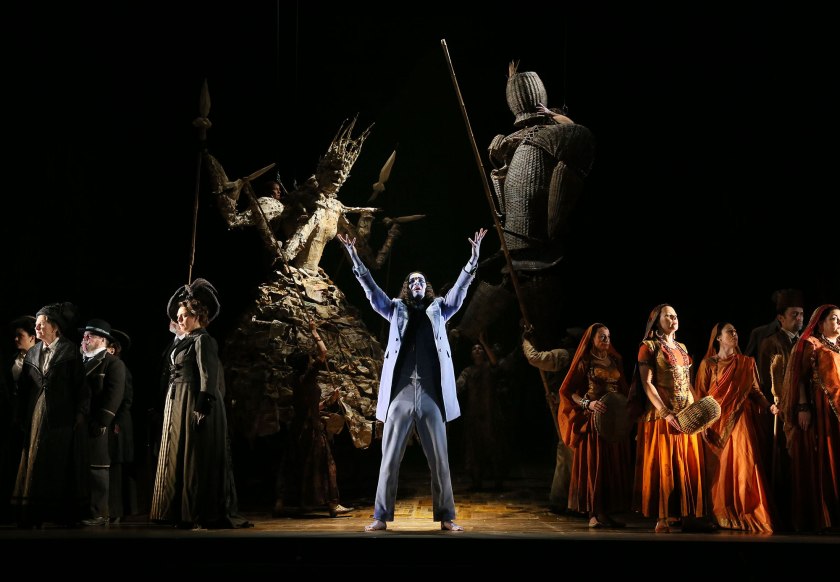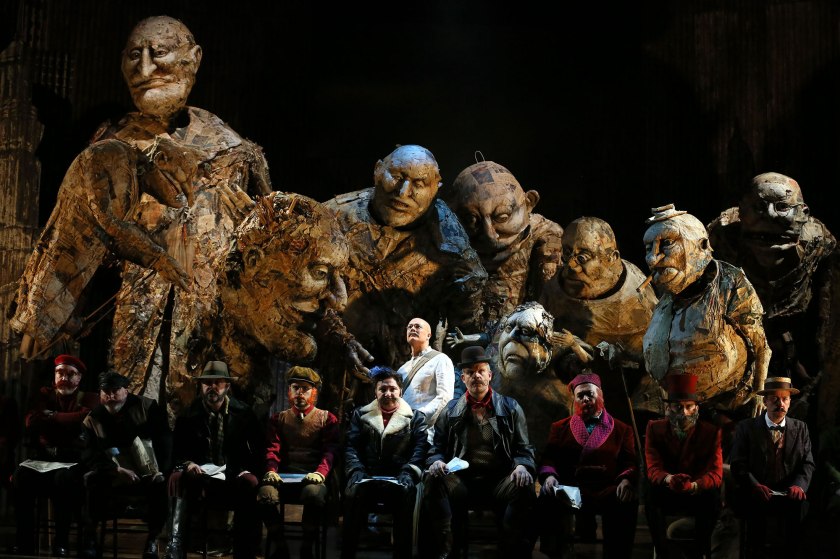I used to hate Philip Glass. But that was because I was exposed to him at a very young age in a rather brutal manner. When I was in my early teens, my father went through an obsessive Philip Glass phase. I challenge any 13year to listen to Philip Glass for several hours almost every day for a several months not to acquire an aversion to his music! But time passed, my father’s phase passed, I grew up, my tastes changed and I re-evaluated my opinion of Philip Glass.
So when a while back a friend told me the ENO were performing Satyagraha at the Coliseum and we could get £12 restricted view tickets, I jumped to agree.
The Coliseum is a beautiful old performance space. London has a lot of great venues like this, with red velvet seats and intricate stucco and stained glass decorations. Just the act of taking my seat in these venues gives me a bit of a thrill! And what’s more they are very well designed, so in most cases, even the views from the balcony are quite good. As we had guessed, our restricted view seats were exceptional value for money.

While Satyagraha is not my favourite Philip Glass opera – that is Akhenaten – it is an exceptional opera. And even though the ENO performance run at three and a half hours, at no point did it feel too long. The score just soars as it sweeps you along into the music.
Satygraha is very loosely based on the life of Gandhi and the score is sung in Sanskrit with no surtitles and I forgot to read up on the plot of the opera before going. But even if I had read it before-hand it wouldn’t have made much difference. Satyagraha only has a plot in the loosest sense of the word. Once we got over our ingrained need to understand exactly what was going on, and just sat back and just enjoyed the audio visual feast in front of us we found ourselves immersed in it.

The staging was a recreation of Phelim McDermott’s 2007’s highly acclaimed theatrical performance and it was a gorgeous sumptuous feast for the eyes. The set was simple and minimalist in warm ocherish colours. The backdrop was made from corrugated iron and newspapers, I can only assume to recreate our preconceptions of how Indian slums look. And I think it worked. It looked elegant and timeless and didn’t distract from the action in front or the music.

That was another interesting thing that make this performance so amazing: even though many scenes only had one or two singers, there was always a full cast of dancers behind the singers. The dancers constantly weaved around filling the stage with their bodies, beautiful puppets, movable parts of the set and all sorts of creations they put together out of newspaper. I particularly enjoyed the imaginative and constant use of newspaper throughout the performance as a versatile and creative prop.

I can’t overstate how much I enjoyed this performance. The music and the theatrical performance joined together to create something truly beautiful and immersive, even transcendental at points. And even if we didn’t understand the sung score, or catch all the details of the plot, the message and the essence of Ghandi shone through throughout the whole opera.


